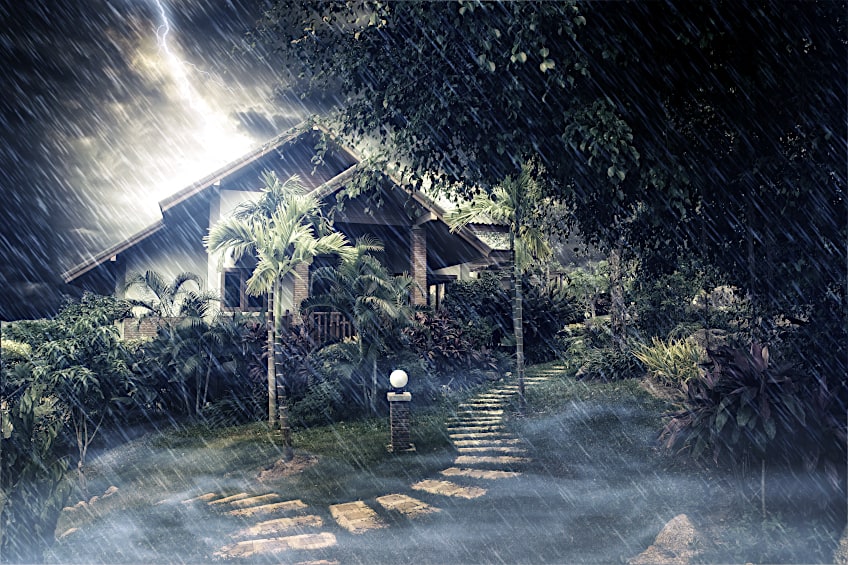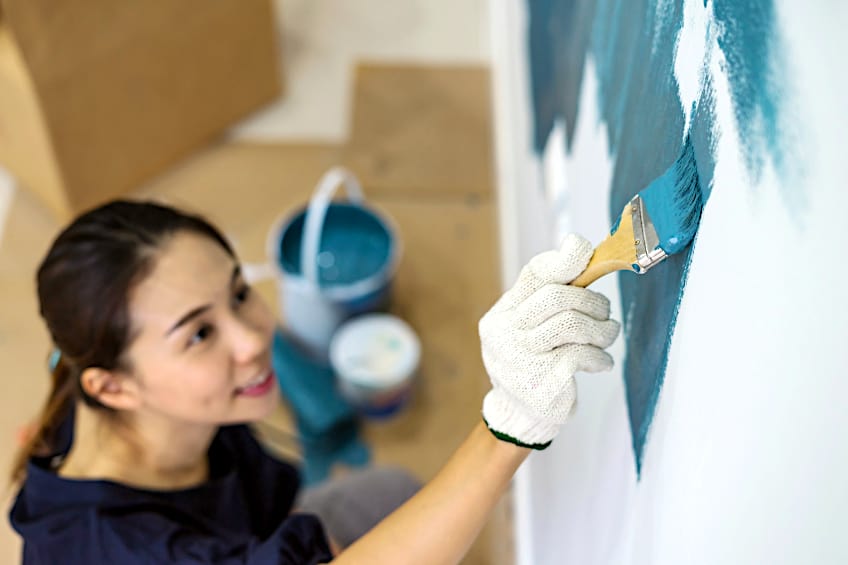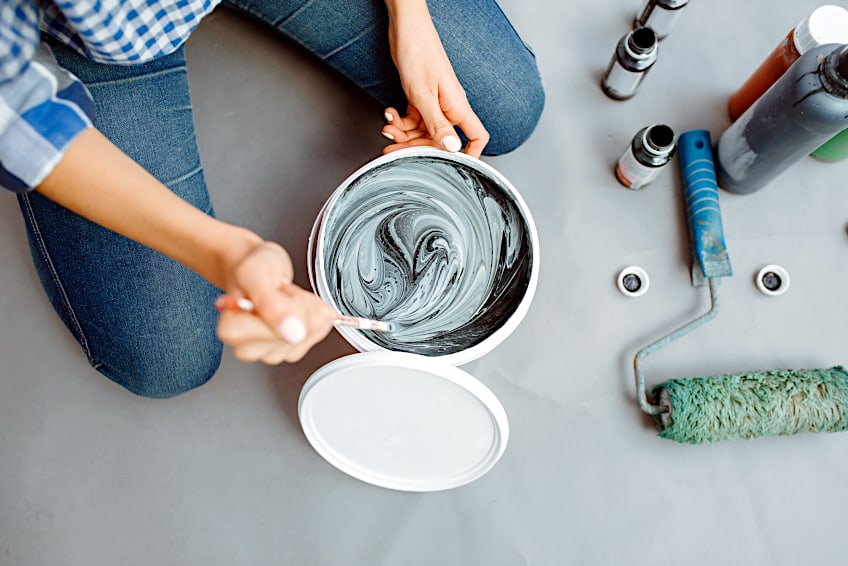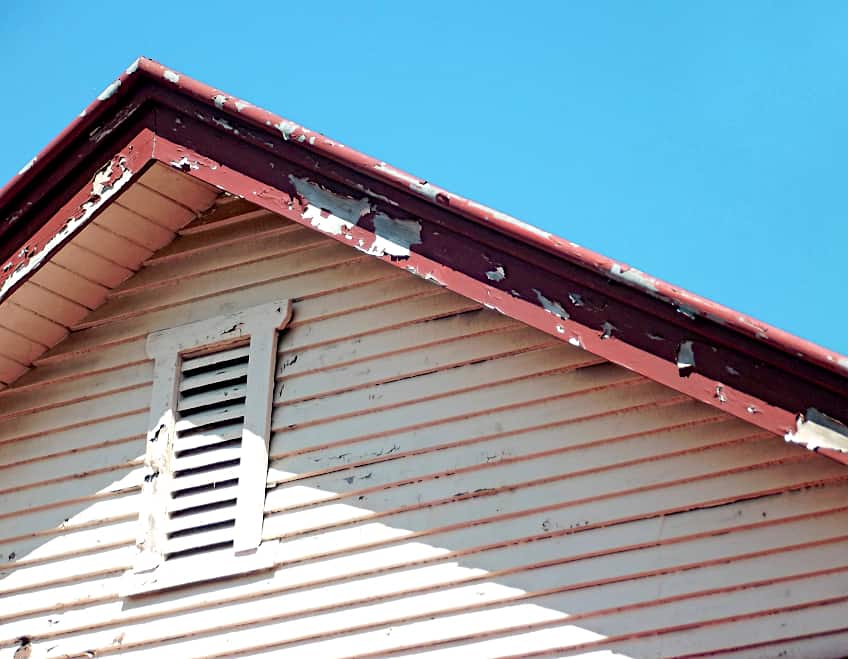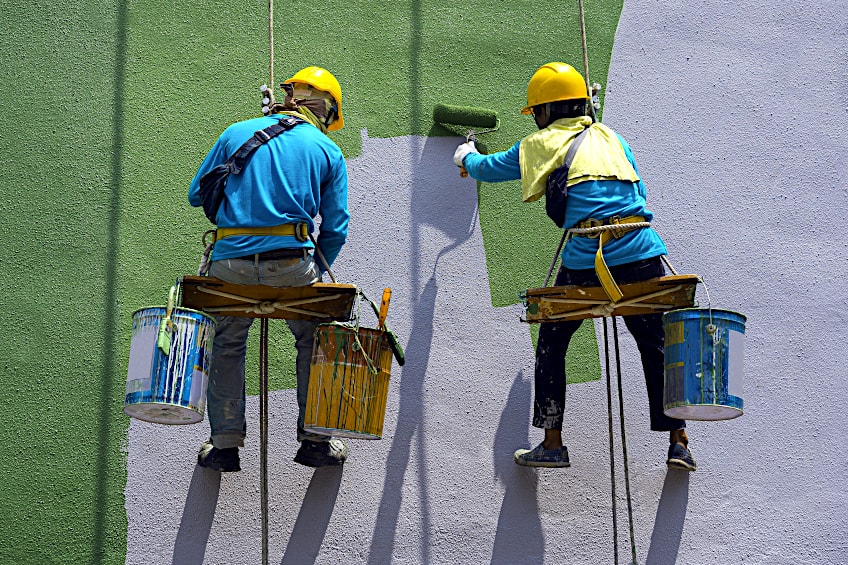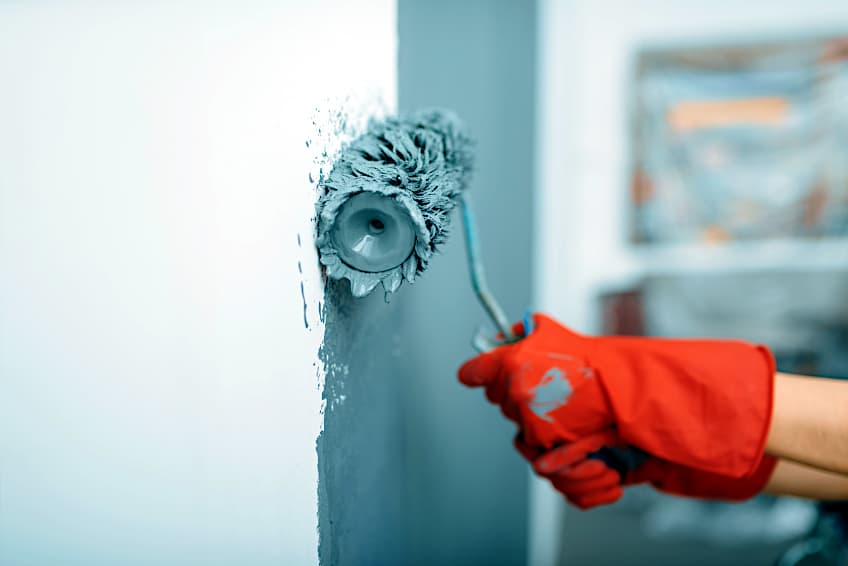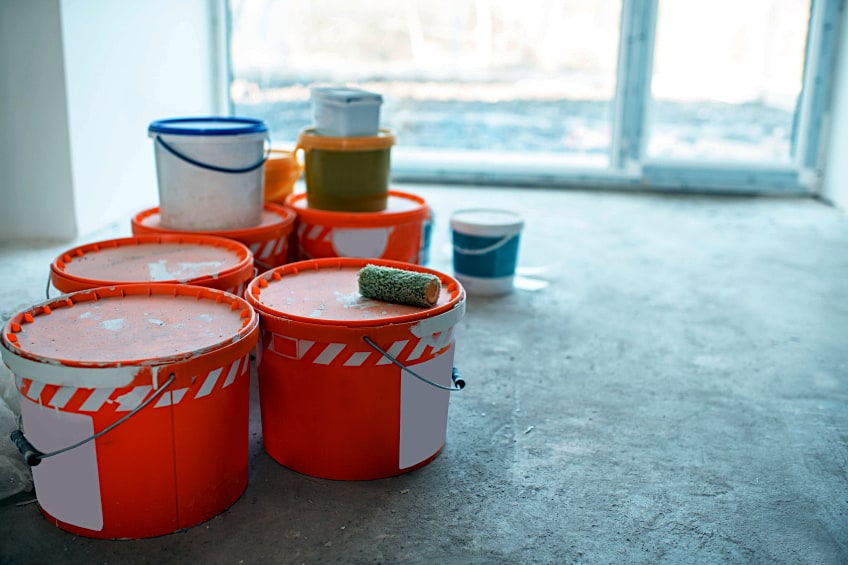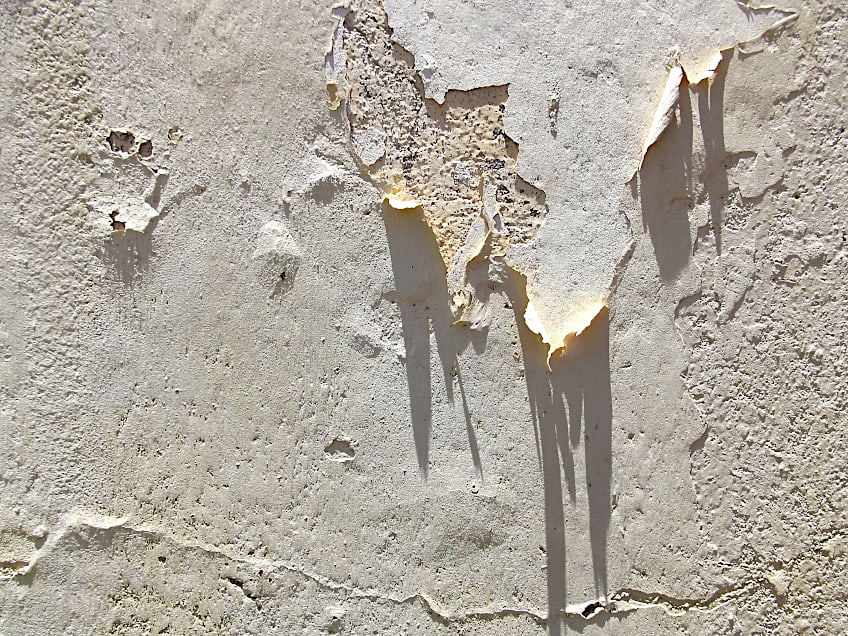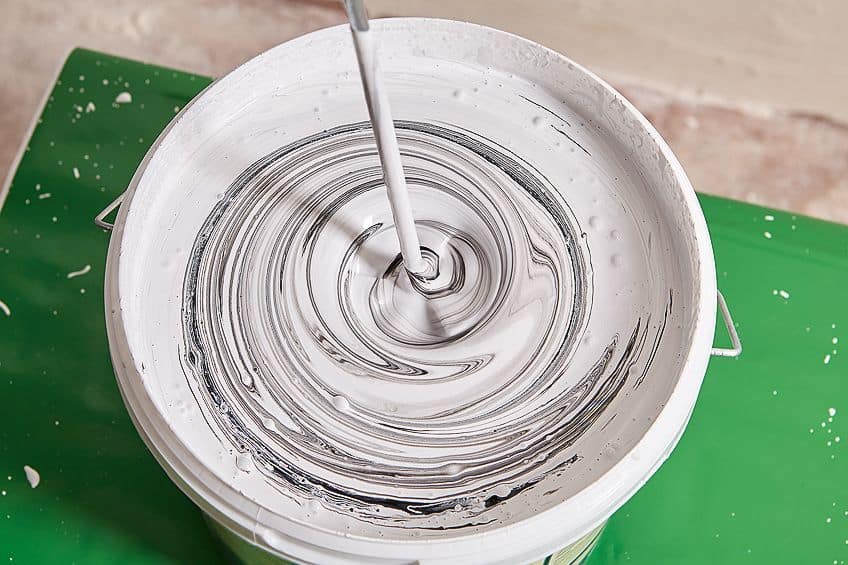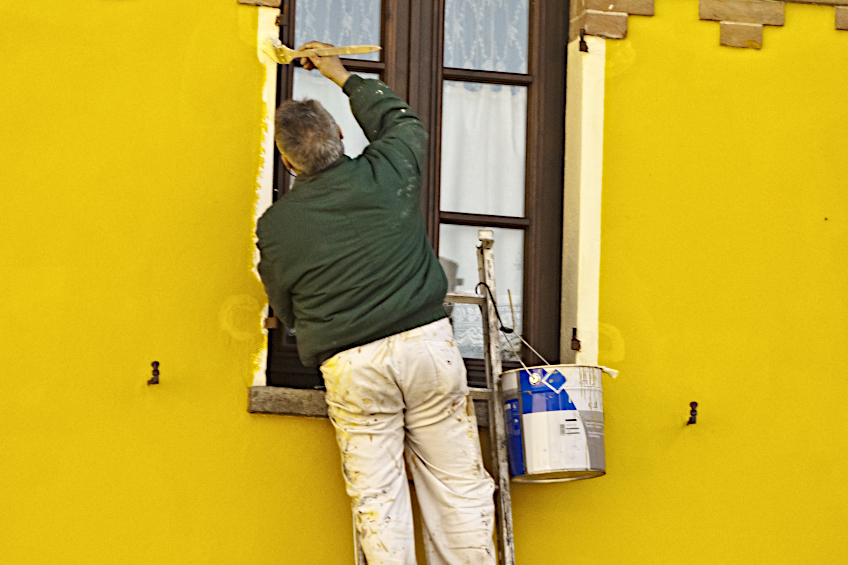Difference Between Interior and Exterior Paint – Types of Coating
This post may contain affiliate links. We may earn a small commission from purchases made through them, at no additional cost to you. You help to support resin-expert.com
Ever since the discovery of paint we have used it to beautify and protect surfaces, whether they be indoors or outdoors. These applications required some notable differences in the composition of the paint being used thanks to the difference in the conditions they’d be facing, and as a result, interior and exterior paint had wildly different properties and additives to make the conducive to their intended applications. What exactly are the differences between interior and exterior paint though, and can they be swapped around? Let’s have a look at the difference between interior and exterior paint, why they are formulated this way, and some of the key characteristics that set them apart from one another.
The Difference Between Interior and Exterior Paint
There are a few key differences between interior and exterior paint that you’ll be able to discern even if you aren’t a chemical engineer. After all, the paint used for exterior applications tends to be far more robust and displays a degree of durability not found in interior paints. This seems fitting considering that exterior paint needs to withstand things like wind, rain, and extreme heat.
Interior paints on the other hand are typically used to coat the interior walls of your home and/or the furnishings that fill them. These paints don’t have to be as durable as their exterior counterparts thanks to the protection provided by your home. This means that they can be formulated with fancy textures and colors that would be a bit redundant to add to exterior paints.
This being said, each paint type has its respective strengths and weaknesses that them the best suited for the job in their intended application. Does this mean that you can use interior paints for exterior applications? Can you use exterior paints indoors? Well, maybe, but it’s best to understand the basic composition of each paint and the respective additives that separate them before you give either of these ideas a try.
What Is Paint?
At the end of the day, whether they’re graded for interior or exterior use, paint is paint. We use it to add some color to the walls of our homes, decorate our homes, paint our cars, and create art, but what is paint on the most fundamental level? Paint is made of a bunch of fundamental properties that make paint, well, paint. What are these things that make a paint a paint, though?
Almost every paint is made from four main ingredients. These ingredients are pigments (that give it its color), additives (that provide distinct qualities), resins (that give it its viscosity), and solvent (that provide its sheen and add to its initial texture). Most paints contain some combination of these substances, with the amounts differing slightly by brand and quality.
When paint is applied to a surface the solvent evaporates during the drying process leaving only the pigment, resin, and additives behind. These ingredients are what form the paint you look at every day, and are the ones that will be protecting your workpiece for what is likely most of its lifetime. As you’ve probably guessed, the key difference between interior and exterior paint then is the base and additives the paint contains.
What Is Exterior Paint?
What is exterior paint? Well, you could think of exterior paint as a light coat of armor on essentially any surfaces it’s been applied to. Exterior paint needs to be able to withstand a wide range of forces that act on exterior surfaces, including but not limited to extreme downpours, constant exposure to sunlight, buffeting from sand and other debris, the effects of UV light, and insect infestation.
This being said, exterior paint needs to be extremely durable. How does it manage this though? Well, one of the elements that make exterior paint so durable is the nature of the resin used in its composition. Due to exposure to constantly changing temperatures, the resin in exterior paint has a degree of elasticity, allowing it to contact with colder temperatures and contract with warmer ones.
This is what gives exterior paint its durability. It is able to adapt to dramatic changes in weather conditions, and this elasticity also allows it to soak up impact and abrasion rather well too. Instead of a static coating then, the exterior paint has the ability to adapt to what the situation demands, a characteristic that is unique to exterior use paint.
This formula initially existed in a rudimentary form and was developed over time, resulting in some of the most durable paints on the market. Modern exterior paints are capable of resisting the effect of rot, mildew, mold, and most common stains as well. The resins used in the production of exterior paint are extremely long-lived and are capable of lasting for more than a decade.
These elastic resins can be added to a wide range of paint types, and in combination with other additives can create some of the most durable and incredibly durable paints around. These resins also provide any paint they’re added to with a shiny finish that isn’t quite reflective but does have a positive aesthetic impact on large flat surfaces.
There are some downsides to using exterior paint though. All of those durable resins and additives often contain substances known as VOCs (volatile organic chemicals) which aren’t only bad for the environment but can cause discomfort and (potential) illness if inhaled or consumed. The presence of these chemicals in exterior paints can also make them more expensive in most instances.
- Durable
- Water-, heat-, impact-, abrasion-, UV-, mold-, and insect-resistant
- Flexible resin composition
- Provides a sheen finish
- Can be applied to most exterior surfaces
- Extremely long-lasting
- Contains loads of VOCs
- Cannot be applied indoors
- Often more expensive than interior paint
What Is Interior Paint?
What is interior paint? Well, essentially any paint that you would use on the interior of your home, or any other application where the workpiece will not be exposed to the elements. Exterior paints are often available in more colors and are generally used more frequently compared to their exterior counterparts.
Interior paint isn’t just used for aesthetic purposes alone though, interior paint typically offers a degree of protection against things like moisture, mold, heat, and some paints even offer a degree of insulation against extreme temperature changes. Interior paints are also significantly easier to clean up compared to other paint types.
If you have little ones running around your home then this can be a real lifesaver, after all, little fingerprints and food stains on your beautifully painted walls can be a nightmare. Thankfully, most interior paints can be scrubbed and cleaned vigorously without the integrity of the coating being compromised, chipped, or scratched.
Another thing that makes interior paint cool is that since it’s applied indoors it doesn’t require sunlight to set and dry. Also, since it’s applied indoors, this type of paint typically has very little odor, which means you don’t have to seal off part of your home when using this type of paint. Interior paints also contain little to no VOCs, which isn’t only good for you but good for the environment too.
The chemical composition of interior paint isn’t too dissimilar from that of exterior paint, which isn’t surprising considering that they’re functionally the same. This being said, while exterior paint contains an elastic resin, the resin inside interior paint is much more rigid, ensuring a firm uncompromising finish.
Why does interior paint contain a more rigid type of resin? Well, since this paint isn’t intended to withstand wind, rain, sunshine, insects, mold, fungi, or UV damage, it doesn’t have to be as robust. This being said, if interior paint coatings are maintained they can crack and tear over time, which could mean having to re-paint the entire surface.
- Can be used indoors
- Wide range of colors to choose from
- Contains little to no VOCs
- A wide variety of textures are available
- Typically has a low odor
- Does not require sunlight to dry
- Easy to clean and maintain
- Not as durable as exterior paint
- Needs to be maintained/cleaned often
- Has low elasticity
- Often requires more coats than exterior paint
Can You Use Interior and Exterior Paint Interchangeably?
This is one of those times where just because something can be done doesn’t mean that it should be done. As we mentioned previously, there are some fundamental differences between interior and exterior paints, but it is these differences that make them best suited for their intended applications. This being said, you could run into some issues if you decide to use exterior paint indoors, and vice versa.
What kind of problems could you face you ask? Well, let’s start with using exterior paint indoors. First off, exterior paint requires a certain amount of sunlight and overall atmospheric exposure to set, dry, and cure completely. Using this paint indoors means that you run the risk of your paint taking far longer than usual to dry if it ends up drying at all.
Another thing you should consider if you’re thinking about using exterior paint indoors is a process called outgassing. If you’ve ever looked at an exterior wall and noticed tiny holes in the paint coat, this is likely the result of outgassing. Essentially, outgassing is when gasses that form part of the paint’s resin are released during the curing process.
This process usually takes around two days and can release quite a bit of fumes if it’s done in a confined space. This being said, it’s not the best idea to use exterior paint indoors, even if it is entirely possible with the right knowledge and experience. Now, what about using an interior paint for exterior applications?
Using interior paint outdoors might not be the best idea either considering that exterior paint has been formulated to be highly durable. Using interior paint for exterior applications then isn’t a good idea if you’re looking for a coating that will last for a couple of years. Remember, the elastic nature of the resin inside exterior paints is what makes them so durable.
The more rigid resins inside interior paints will essentially lead to your paint cracking and peeling away at the first sign of excessive wind, rain, or sunshine. Not only that, but you’d have to apply many coats of interior paint on an exterior surface to protect it from things like insects and mold, and even then the barrier wouldn’t last very long due to the inherent nature of the paint itself.
One reason that you might want to use interior paint outdoors is that they typically have more colors and textures to choose from. However, these colors and textures have not been designed to withstand external forces like impact, abrasion, or even the effects of UV light, which means that your aesthetic will be pretty short-lived.
What Types of Paint Can Be Used for Interior and Exterior Applications?
This is a good question considering how many paint types there are to choose from these days. Keep in mind that any one type of paint can be formulated for both interior and exterior use, with only the type of resin and additives being altered to suit the application. Be sure to check the label and/or consult the manufacturer if you’re unsure whether your paint is graded for the intended application.
Are there different types of exterior paint? For exterior applications, there are only a handful of paints that can be used. What are these paints you ask? There are four types of exterior paint, including acrylic paints, latex paints, enamel paints, and oil-based paints are all used for exterior applications due to their ability to bond with the fibers of a given surface. This in combination with the special resins and additives used in their creation makes them the ideal paints for exterior surfaces.
Are there different types of interior paint? For interior applications, you could use pretty much any paint type, as long as it’s not graded for exterior use. There are many types of interior paint, including oil paint, acrylic paint, enamel paint, eggshell paint, metalized dye paint, latex paint, and even milk paint! All of these paints, if graded for interior use, contain as few VOCs as possible, are relatively easy to clean up, are virtually odorless, and don’t require sunlight to cure and dry completely.
Now that you know what the differences between interior and exterior paints are, what makes them distinct from one another, how they are formulated, why it’s a bad idea to use them interchangeably, and what paint types are used for each application, its time for you to get out there and put your newfound knowledge to the test. Remember to always check the labels of the paint you’re using if you’re unsure, and when in doubt always consult the manufacturer.
Frequently Asked Questions
What Does Interior Paint Mean?
What does interior paint mean? Basically, it means any paint that has been formulated to occupy the same space we live in. This paint is typically easy to clean, doesn’t require a lot of maintenance, and is designed to withstand minor impact and abrasion pretty well.
Is There a Difference Between Indoor and Outdoor Paint?
Yes, there is. The primary difference between indoor and outdoor paint, besides their intended applications, is the type of resins and additives used to make them. Indoor paint contains a more rigid resin and fewer additives, whereas outdoor paint contains a more elastic resin with more additives to increase durability.
What Happens if You Accidentally Use Interior Paint Outside?
This can be a costly and time-consuming mistake to rectify. Interior paint has not been formulated to withstand things like wind, rain, sunshine, UV damage, extreme impact, abrasion, and advances from insects and mold. This paint will likely degrade relatively quickly, leaving you to strip and repaint the surface.


